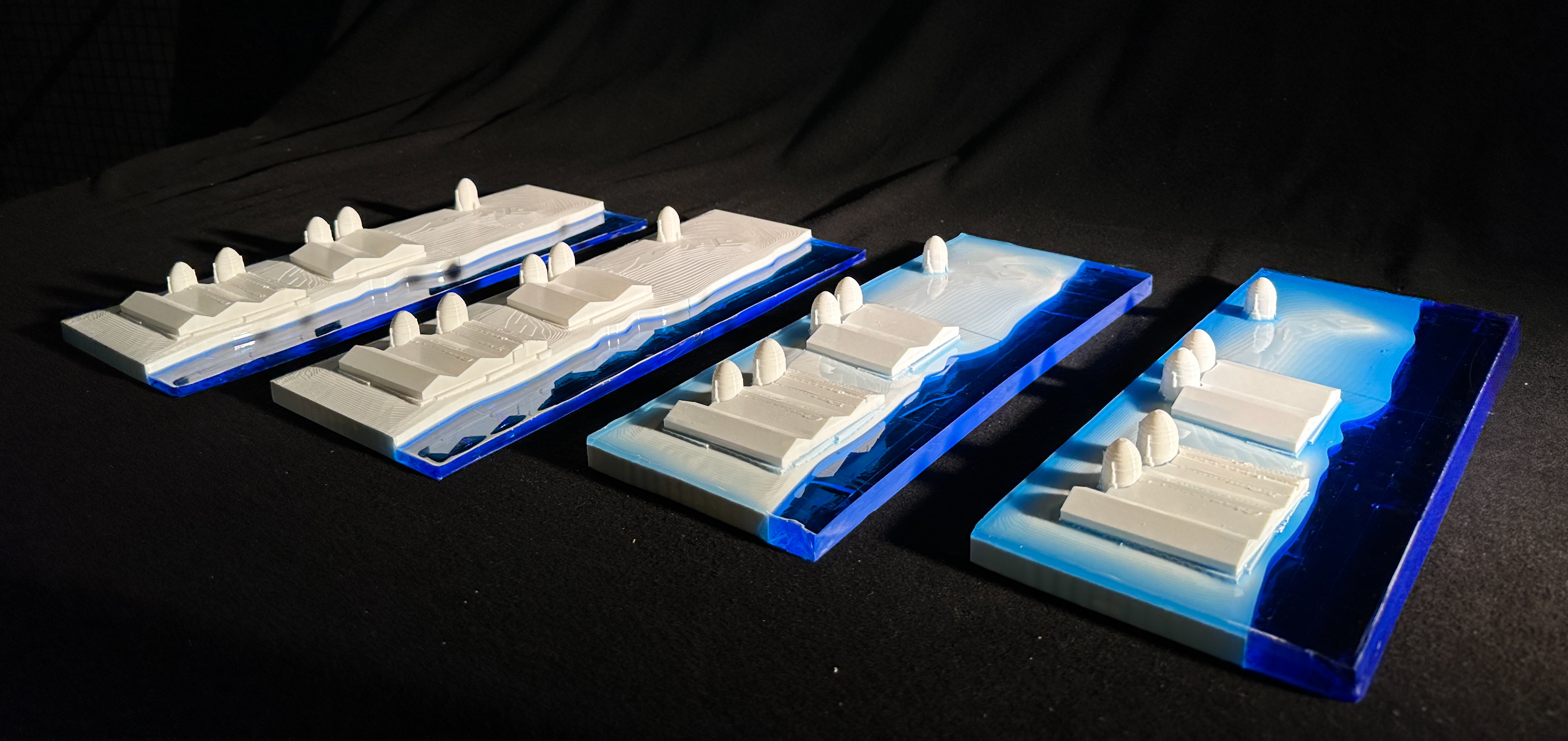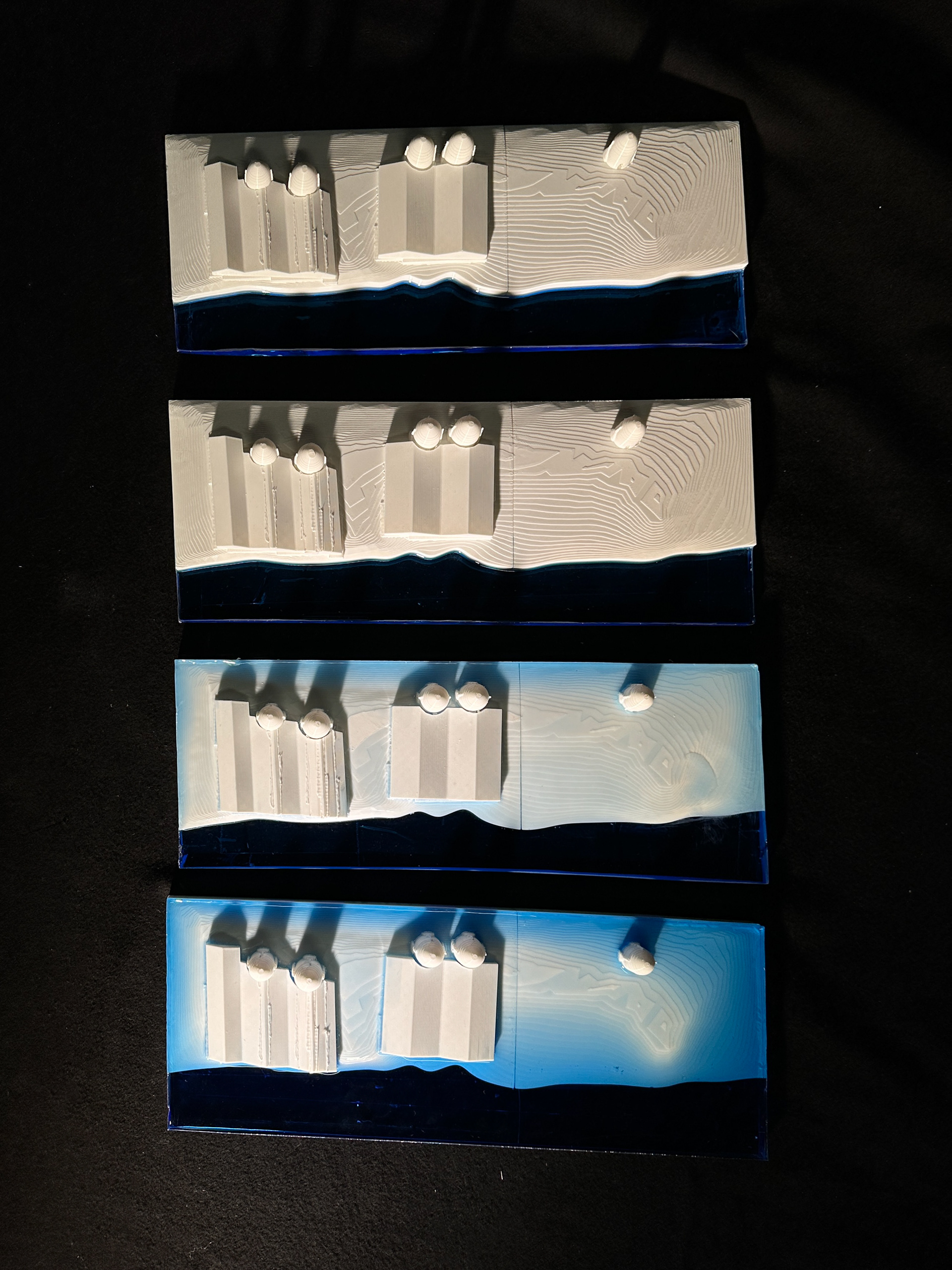In this fourth-year final studio, my partners Sophie Smoke, Emma Kirby, and I developed Cultural Preservation, a proposal for the historic brick-making village of Mang Thit, Vietnam. Led by visiting professor and Vietnamese architect Ha Nguyen - who successfully advocated for the site’s protection as a heritage area after traditional brick production was halted due to pollution - our project explores how cultural identity, craft, and environmental resilience can coexist. Our design is structured around three key principles: innovation, repurposing, and preservation. The first two kilns introduce sustainable approaches to brick production, including an electric kiln that eliminates emissions and a new compression technique - invented by Ha Nguyen - that removes the need for firing. Attached warehouses are where the traditional brick-making methods occur and include an upper level for pottery-making classes. A neighboring artisan market invites visitors to engage with and purchase local craft, as well. The third and fourth kilns demonstrate repurposing, housing a restaurant that features private dining within a kiln and sources ingredients from local farms, and a cultural complex dedicated to traditional practices like Don Ca Tai Tu and Tai Chi. The final kiln is left untouched as a gesture of preservation, becoming the focal point of a Heritage Path that guides visitors through the site’s history. To address frequent flooding, we raised the site’s circulation on a boardwalk system seven feet above sea level, higher than the highest flood of the year, and proposed planting a mangrove forest for natural protection. Together, these interventions envision Mang Thit as a living archive - one that honors its legacy while creating new opportunities for community and cultural exchange.
Thesis: By fostering cultural vitality and supporting local economy through tourism, this project addresses environmental challenges while enhancing community engagement.



